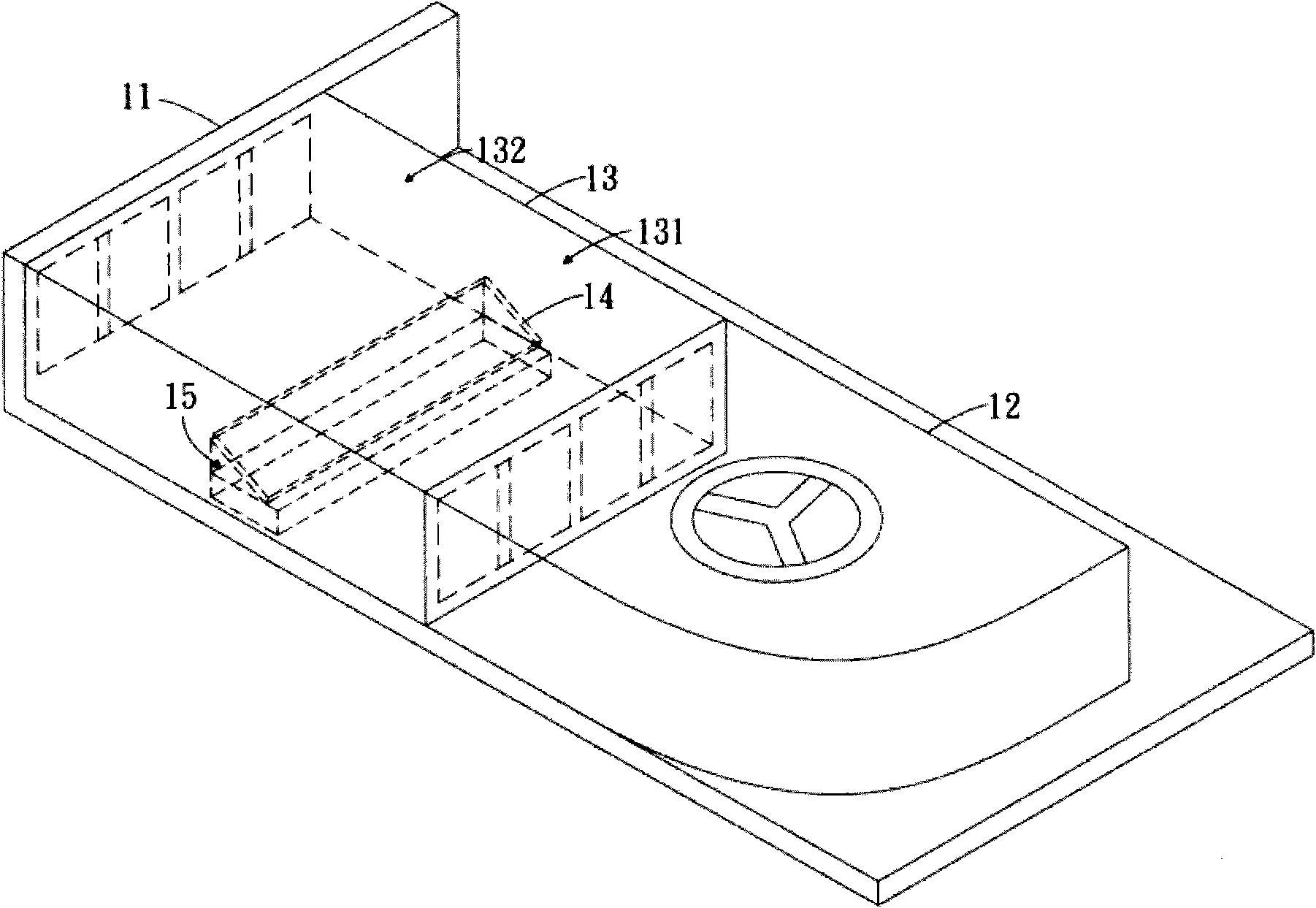Device and method for radiating
A technology of heat dissipation device and heat dissipation method, which is applied in cooling/ventilation/heating transformation, instruments, electrical digital data processing, etc., can solve the problems of user discomfort, conduction to the casing, and high temperature of the casing
- Summary
- Abstract
- Description
- Claims
- Application Information
AI Technical Summary
Problems solved by technology
Method used
Image
Examples
Embodiment Construction
[0021] The technical contents, features and effects of the present invention are described as follows in conjunction with drawings and embodiments.
[0022] Please refer to Figure 1A to Figure 1D , are the assembly schematic diagram, perspective view, cooling airflow schematic diagram and cross-sectional view along the A-A section line of the first embodiment of the present invention, respectively. part of the case 11), and a fan 12 is arranged in the case 11 to generate the first cooling airflow F1, this embodiment includes: a heat dissipation assembly 13 and an air deflector 14, wherein the heat dissipation assembly 13 has a first area 131 and The second area 132 has a second opening 133, the first cooling air flow F1 flows from the first area 131 of the heat dissipation assembly 13 to the second area 132, and the air deflector 14 is arranged on the first area 131 of the heat dissipation assembly 13 for use Reduce the cross-sectional area of the first cooling air flow F1...
PUM
 Login to View More
Login to View More Abstract
Description
Claims
Application Information
 Login to View More
Login to View More - R&D
- Intellectual Property
- Life Sciences
- Materials
- Tech Scout
- Unparalleled Data Quality
- Higher Quality Content
- 60% Fewer Hallucinations
Browse by: Latest US Patents, China's latest patents, Technical Efficacy Thesaurus, Application Domain, Technology Topic, Popular Technical Reports.
© 2025 PatSnap. All rights reserved.Legal|Privacy policy|Modern Slavery Act Transparency Statement|Sitemap|About US| Contact US: help@patsnap.com



